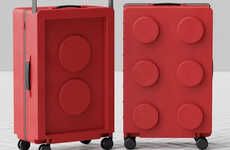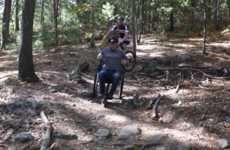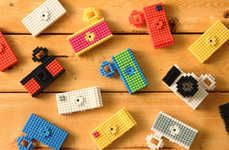
Simon Burfield's 'The Lego Wheelchair' is Plastic
References: blog.makezine & gizmodo
Simon Burfield's 'The Lego Wheelchair' brandishes a novel way to incorporate small blocks of plastic. A series of grey and orange pieces have been used here to create a full on method of transport for the disabled, and despite its plastic composition, it can actually support up to 200 pounds.
Burfield produced his Lego Wheelchair in association with Rotacaster, a company that specializes in wheels, robotics, and multi-directional designs. Its scientists have helped to make the design turn left, right, forwards and backwards, making it a rather practical product.
Six Lego Minstorm NXT computer systems control the entire machine. The collaborations between Burfield and independent tech associations have enabled this engineering project to become relevant for both the health care world and for creative architects.
Burfield produced his Lego Wheelchair in association with Rotacaster, a company that specializes in wheels, robotics, and multi-directional designs. Its scientists have helped to make the design turn left, right, forwards and backwards, making it a rather practical product.
Six Lego Minstorm NXT computer systems control the entire machine. The collaborations between Burfield and independent tech associations have enabled this engineering project to become relevant for both the health care world and for creative architects.
Trend Themes
1. Plastic Design - The use of plastic in innovative designs creates opportunities for lightweight, durable, and customizable products.
2. Multi-directional Mobility - The incorporation of multi-directional designs in mobility solutions opens up new possibilities for increased maneuverability and accessibility.
3. Collaborative Engineering - The collaboration between designers, technologists, and industry specialists drives disruptive innovation in various sectors.
Industry Implications
1. Healthcare - The Lego Wheelchair's application in the healthcare industry presents opportunities for improved mobility and enhanced patient care.
2. Robotics - The use of Lego Mindstorms and collaborative technologies in the wheelchair design showcases potential disruptions in the robotics industry.
3. Architecture - Incorporating creative designs and engineering innovations in architecture can lead to more inclusive and accessible built environments.
1.7
Score
Popularity
Activity
Freshness















